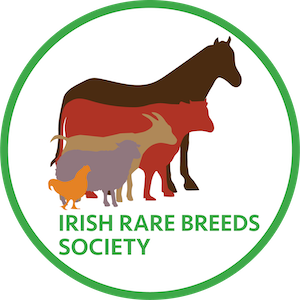Bó Riabhach Cattle: Ireland’s Rare and Striking Breed
Bó Riabhach cattle are typically red to brown in coat color with black brindle type stripes throughout the body. Small white patches have been observed throughout this predominantly red/black/brown coat color scheme. Fully grown cows have been estimated at 135-140cm and are structurally robust. Bó Riabhach cattle have been shown to be great milkers, however no milk yield records exist. Unfortunately, the numbers of Bó Riabhach Cattle remaining in Ireland are estimated to be as little as 60-70 and are spread amongst ten devoted breeders throughout the country.
The word “riabhach” is Given in O Donaill’s dictionary as “streaked”, striped, brindled and the spelling has remained unchanged back to Old Irish. The pronunciation in English is “on vo ree-av-och”. Riabhach also has wider meanings as in speckled grey, dull, drab, e.g. ” La riabhach” – a dull day.
Historical References to Bó Riabhach Cattle
Earliest Mention in “Early Irish Farming”
The earliest reference that we have to the Bó Riabhach is in “Early Irish Farming” by Fergus Kelly. Here the Bó riabhach is mentioned in Middle Irish (800A.D. to 1200A.D.) as being polled.
Two Breeds of Brindle Cattle in 19th Century Ireland
As stated by W.R.Wilde in his publication “On The Ancient and Modern Races of Oxen in Ireland” there were two breeds of brindle cattle evident in Ireland in the first half of the 19th century.
The Kerry Breed
Firstly, the Kerry, was small in stature and came in red, black or brindled.
The Irish Longhorn
Secondly, the Irish Longhorn similar but not identical to the Craven and Lancashire cattle. Of large stature they came in red or brindled with long hair and thick hides. In many cases the horn curved downwards crossing behind or in front of the jaw. The last of the Irish Longhorn is known to have belonged to Lord De Freyne of French Park who presented a pair at the Royal Dublin Cattle show in the middle of the 19th century”
Bó Riabhach Cattle in Irish Folklore
The Importance of Bó Riabhach in Cultural Heritage
Given the inclusion of the Bó Riabhach in the calendar of folklore there is no doubt as to its importance as a piece of living heritage. As we have very scant evidence in our historical texts as to colour of cattle it must be stressed that a reference in “middle Irish” of the Bó Riabhch is of particular cultural significance.
The Story of the Old Brindle Cow
The Days of the brindle cow
In Irish folklore when the harsh, wet and windy weather of the month of March continued into the month of April, March was considered to have borrowed days from the month of April. This is illustrated in the story of the old brindle cow, or in Irish, An tSean-Bo Riabhach.
In the story as the month of March comes to an end, an old brndle cow boasted that even the harsh days of the month of March could kill her. Angered by this boast, March borrowed three days from the month of April during which the cow was skinned and killed.
This tale has many regional variations as shown in “The schools collection” of Duchas.
Regional Variations in “The Schools Collection”
In 1937 and 1938, more than 100,000 schoolchildren, under the supervision of their teachers, collected stories from the old people in their local school areas and transcribed them into notebooks. These notebooks were deposited the Folklore Collection in University College Dublin.
The Seanriabhach Tale from Co. Tipperary
There was once an old speckled cow, the winter came cold and wet, but it did not kill the cow. The owner thought that she would live for another year, but March made a bet that it would kill the brindle cow. March came and went and still she was alive. So it had to borrow 10 days from April to kill the cow. Before the end of the 10 days the cow died.
Since then the first ten days of April are known as “The Sean riabhac”
Told by Eamon O’Brien, Hussystown, Co.Tipperary.
Ballingeary N.S., Co. Tipperary.






